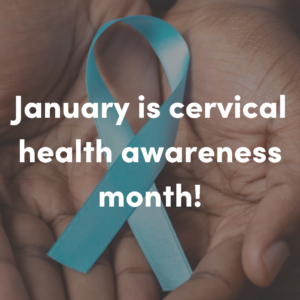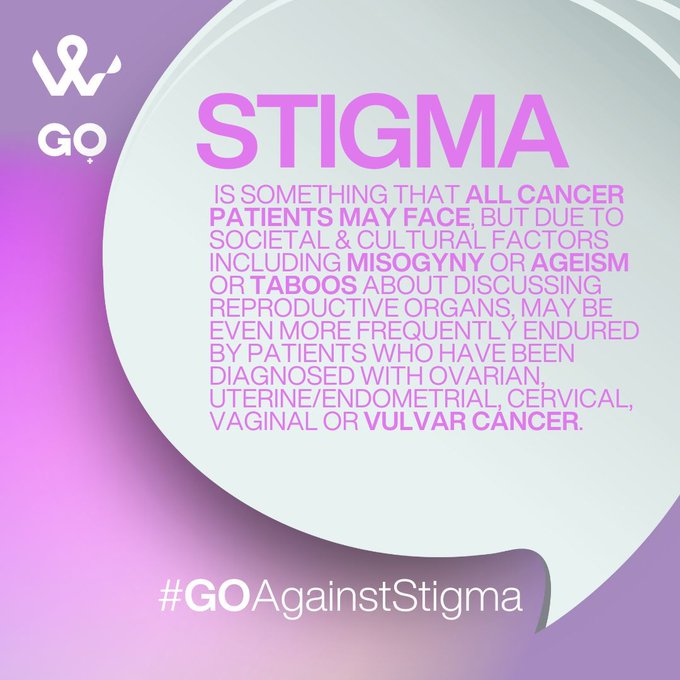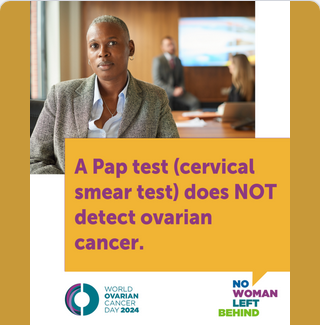“Cervical cancer is most frequently diagnosed
in women between the ages of 35 and 44,
with the average age being 50”.1
Umbrella
What may the Cervical Cancer Umbrella include?
Depending on the Source (DotS) this Umbrella may include:
- Cancer of the Cervix
- Cervical Cancer
- Cervix Cancer
Cancer
What is the cancer?
DotS the definition of cancer may vary. The (United States) National Cancer Institute’s (NCI) definition is:
A term for diseases in which abnormal cells divide without control and can invade nearby tissues. Cancer cells can also spread to other parts of the body through the blood and lymph systems”.2
Cervix
What is the cervix?
DotS the definition of the cervix may vary. The (United States) Centers for Disease Control and Prevention’s (CDC) definition:
Definition
What is cervical cancer?
DotS the definition of cervical cancer may vary. The (United States) National Cancer Institute’s (NCI) definition is:
Cancer that forms in tissues of the cervix (the organ connecting the uterus and vagina). It is usually a slow-growing cancer that may not have symptoms but can be found with regular Pap tests (a procedure in which cells are scraped from the cervix and looked at under a microscope)”.4
Signs and Symptoms
What are signs and symptoms of cervical cancer?
In Cervical Cancer: Early Detection, Diagnosis, and Staging: Signs and Symptoms of Cervical Cancer the American Cancer Society (ACS) explain:
- Abnormal vaginal bleeding, such as bleeding after vaginal sex, bleeding after menopause, bleeding and spotting between periods, or having (menstrual) periods that are longer or heavier than usual. Bleeding after douching may also occur
- An unusual discharge from the vagina − the discharge may contain some blood and may occur between your periods or after menopause
- Pain during sex
- Pain in the pelvic region”.5
Cause
What causes cervical cancer?
In Cervical Cancer: Cervical Cancer Basics the CDC explain:
In Cervical Cancer: Causes the (Australian) Jean Hailes for Women’s Health (JH) also note:
HPV is a common sexually transmitted infection that affects the surface cells of the genital area, including the cervix, vagina and vulva. It can also cause visible warts.
HPV is very common. About 80% of women will have the virus at some point in their lives, but many don’t know they’ve been exposed to the infection.
Most women with the infection don’t develop cervical cancer. Only certain types of HPV cause cancer.
Cervical cancer usually develops many years after the HPV infection occurs”.7
In Cervical Cancer: Risks and Causes the (United Kingdom) Cancer Research UK elaborate on risks and causes of cervical cancer.
Age
Is there an association between age and cervical cancer?
In Cervical Cancer: About Cervical Cancer – Key Statistics for Cervical Cancer: How Common Is Cervical Cancer? the ACS note:

“Cervical cancer is most frequently diagnosed in women between the ages of 35 and 44, with the average age being 50. It rarely develops in women younger than 20.
Many older women don’t realize that they are still at risk of developing cervical cancer as they age. More than 20% of cervical cancers are found in women over 65. However, these cancers rarely occur in women who have been getting regular tests to screen for cervical cancer before they were 65”.8
Common or Not
How common is cervical cancer?
In Cervical Cancer: Overview the World Health Organization note:
Pap Tests
Can when to start, when to stop and how often to have regular Pap tests, vary?
Early Detection
Is there an association between regular Pap tests and the early detection of cervical cancer?
Yes. In Cervical Cancer the ACS explain:
Health Care Provider
What if I think I have cervical cancer?
If you think you have cervical cancer, or you are concerned about anything down there, it may be in your best interest to choose to talk to your health care provider about this.
In Cervical Cancer: Symptoms & Causes – Symptoms: When To See A Doctor the (United States) Mayo Clinic encourage us to:
Health Topics A-Z
Where may I find Health Topics A-Z related to Cervical Cancer?
In Health Topics A-Z you may find:
Links
Where may I find Links related to Cervical Cancer?
Your Country may have Links similar to:
Links
This Links List to third party websites is neither comprehensive nor exhaustive. Inclusion on this Links List does not imply endorsement or recommendation. Non-inclusion on this Links List does not imply non-endorsement or non-recommendation. Third party websites are not under the control of Meno Martha International Menopause Directory. Third party websites may contain explicit medical images and/or sexual references. Please read Meno Martha International Menopause Directory’s Links Policy before proceeding to a Link. Please contact Webmaster if you experience a problem with a Link.New or Updated
- 4 Ways To Reduce Cervical Cancer
- British Gynaecological Cancer Society and British Menopause Society Guidelines Management of Menopausal Symptoms Following Treatment of Gynaecological Cancer [August 2024]
- Cervical Cancer
- Cervical Cancer
- Cervical Cancer
- Cervical Cancer
- Cervical Cancer
- Cervical Cancer
- Cervical Cancer
- Cervical Cancer
- Cervical Cancer
- Cervical Cancer
- Cervical Cancer
- Cervical Cancer
- Cervical Cancer 101: What Every Woman Needs To Know
- Cervical Cancer Awareness
 Cervical Cancer Causes, Risk Factors, and Prevention
Cervical Cancer Causes, Risk Factors, and Prevention- Cervical Cancer Elimination [17 November 2024]
- Cervical Cancer Elimination Day of Action 2024 [17 November 2024]
- Cervical Cancer Elimination Initiative
- Cervical Cancer Overview
- Cervical Cancer Screening
- Cervical Cancer Screening (PDQ)–Patient Version [+ Images]
- Cervical Cancer Screening—An Interactive Journey
- Cervical Cancer Screening – Multiply Languages
- Cervical Cancer Screening: Pap and HPV Tests
- Cervical Cancer Survivor: ‘Don’t Let Fear Keep You From Going To the Doctor’
- Cervical Cancer [+ Video]
- Cervical Cancer [Multiply Languages]
- Cervical Cancer – Multiply Languages
- Cervical Cancer: Cervical Cancer Basics
- Cervical Cancer: Basic Information
- Cervical Cancer: Causes, Risk Factors, and Prevention – Can Cervical Cancer Be Prevented?
- Cervical Cancer: Causes, Risk Factors, and Prevention – What Are the Risk Factors for Cervical Cancer? Smoking
- Cervical Cancer: Early Detection, Diagnosis, and Staging – What Should You Ask Your Doctor About Cervical Cancer?
- Cervical Cancer: Getting Diagnosed
- Cervical Cancer: Prevention of Cervical Cancer: The Cervical Cancer Vaccine – Do You Still Need To Have Pap Smear Tests If You Have Had the Vaccine?
- Cervical Cancer: Reducing Risk for Cervical Cancer
- Cervical Cancer: Risk Factors
- Cervical Cancer: Risks and Causes
- Cervical Cancer: Screening
- Cervical Cancer: Screening for Cervical Cancer
- Cervical Cancer: Symptoms of Cervical Cancer
- Cervical Cancer: Treating Cervical Cancer
- Cervical Cancer: Treatment of Cervical Cancer
- Cervical Cancer: What Are the Risk Factors for Cervical Cancer? Lack of Regular Cervical Screening Tests
- Cervical Cancer–Patient Version
- Cervical Dysplasia: Is It Cancer?
- Cervical Health Awareness Month [January, United States]

- Cervical Screening
- Cervical Screening
- Cervical Screening: Leaflet for Women Considering Screening [Multiply Languages] [United Kingdom]
- Cervical Screening: What Is Cervical Screening? How Cervical Screening Is Done [Video]
- Cervical Screening: Why It’s Important
- Cervivor.org [Cervivor, United States]
- Colposcopy
- Colposcopy
- FAQs: Cervical Cancer
- FAQs: Cervical Cancer Screening
- Gynecologic Cancers
- Gynecologic Cancer Awareness
- Gynecological Cancers
- HPV (Human Papillomavirus)
- HPV (Human Papillomavirus)
- HPV Vaccine: Who Needs It, How It Works
- HPV Vaccines
- HPV and Cancer
- HPV and Pap Testing
- HPV and Pap Testing: Do Women Who Have Been Vaccinated Against HPV Still Need To Be Screened for Cervical Cancer?
- HPV and Pap Testing: What Causes Cervical Cancer?
- Human Papillomavirus (HPV)
- Human Papillomavirus (HPV)
- Human Papillomavirus (HPV) and Cervical Cancer
- Human Papillomavirus (HPV): About HPV
- Human Papillomavirus Vaccine
- Information for Trans, Non-Binary and Intersex People
- International HPV Awareness Day 04 Mar 2024
- Mayo Clinic Minute: Why Black Women Need To Be Screened for Cervical Cancer [+ Video]
- Mayo Clinic Q&A Podcast: The Link Between Racial Disparities and Cervical Cancer [+ Video]
- Mayo Clinic Q&A: What To Know About Cervical Cancer
- National Breast and Cervical Cancer Early Detection Program (NBCCEDP)
- National Breast and Cervical Cancer Early Detection Program (NBCCEDP) [United States]
- National Cervical Cancer Coalition
- Pap Smear
- Pap Smear: Do I Need One If I’m A Virgin?
- Pap and HPV Tests
- Prevent 6 Cancers With the HPV Vaccine
- Prevent Cervical Cancer
- Reaching 2030 Cervical Cancer Elimination Targets – New WHO Recommendations for Screening and Treatment of Cervical Pre-Cancer
- Resources To Share – Videos: Under the Paper Gown Comedy Web Series
- The Pap (Papanicolaou) Test
- Tips for Tracking Your Bleeding
- Understanding Gyn Cancers
- Videos and Podcasts: Videos – How Do I Deal With the Menopause After A Diagnosis of Gynaecological Cancer
- Webinars: Previous – Sexual Dysfunctions, Update on Gynae Cancers and Management
- You Need To Know [+ Video: Bleeding After the Menopause – An Important Message You Need To Know]
- Worldcancerday.org: World Cancer Day 2025: United by Unique – Championing People-Centred Cancer Care
- World GO Day [World Gynecologic Oncology Day, 20 September 2024]


- World Ovarian Cancer Day May 8, 2024

- Your Guide To Cervical Screening
Sources
Where may I find the Sources quoted?
You may find the Sources quoted at:
Sources
- Cervical Cancer: About Cervical Cancer – Key Statistics for Cervical Cancer: How Common Is Cervical Cancer? Last Revised: 16 January 2025. American Cancer Society https://www.cancer.org/cancer/cervical-cancer/about/key-statistics.html Accessed: 17 January 2025
- NCI Dictionary of Cancer Terms: C — Cancer. National Cancer Institute https://www.cancer.gov/publications/dictionaries/cancer-terms/expand/C Accessed: 17 January 2025
- Cervical Cancer: Cervical Cancer Basics – What It Is. 11 December 2024. Centers for Disease Control and Prevention https://www.cdc.gov/cervical-cancer/about/index.html Accessed: 17 January 2025
- NCI Dictionary of Cancer Terms: C — Cervical Cancer. National Cancer Institute https://www.cancer.gov/publications/dictionaries/cancer-terms/expand/C Accessed: 17 January 2025
- Cervical Cancer: Early Detection, Diagnosis, and Staging: Signs and Symptoms of Cervical Cancer. Last Revised: 02 October 2024. American Cancer Society https://www.cancer.org/cancer/cervicalcancer/detailedguide/cervical-cancer-signs-symptoms Accessed: 17 January 2025
- Cervical Cancer: Cervical Cancer Basics – What It Is. 11 December 2025. Centers for Disease Control and Prevention https://www.cdc.gov/cervical-cancer/about/index.html Accessed: 17 January 2025
- Cervical Cancer: Causes. Last Updated: 31 December 2024 | Last Reviewed: 14 April 2023. Jean Hailes for Women’s Health https://jeanhailes.org.au/health-a-z/vulva-vagina-ovaries-uterus/cervical-cancer Accessed: 17 January 2025
- Cervical Cancer: About Cervical Cancer – Key Statistics for Cervical Cancer. Last Revised: 16 January 2025. American Cancer Society https://www.cancer.org/cancer/cervical-cancer/about/key-statistics.html Accessed: 17 January 2025
- Cervical Cancer: Overview. World Health Organization https://www.who.int/health-topics/cervical-cancer#tab=tab_1 Accessed: 17 January 2025
- Cervical Cancer. American Cancer Society https://www.cancer.org/cancer/cervicalcancer/index Accessed: 17 January 2025
- Cervical Cancer: Symptoms & Causes – Symptoms: When To See A Doctor. 10 January 2025. Mayo Clinic https://www.mayoclinic.org/diseases-conditions/cervical-cancer/symptoms-causes/syc-20352501 Accessed: 17 January 2025








